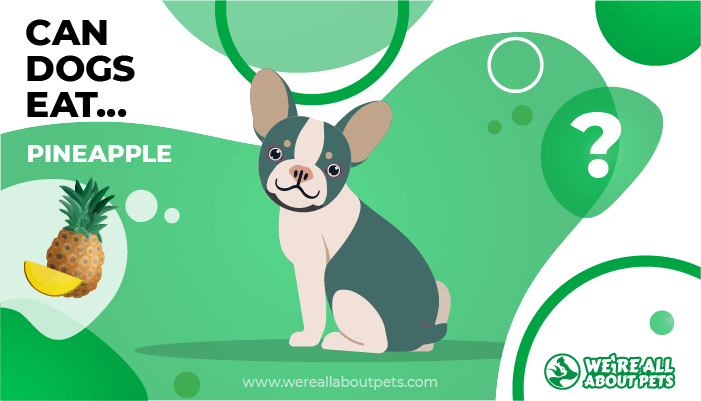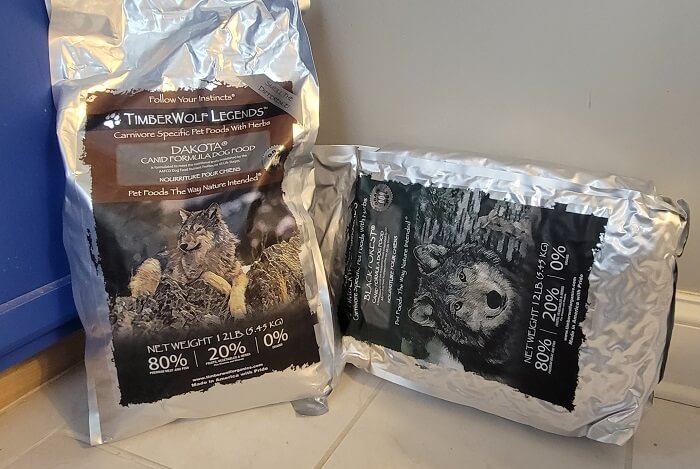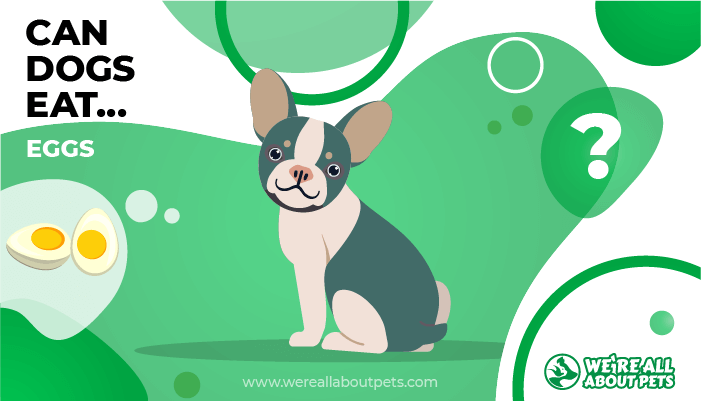Can Dogs Eat Pineapple?
This page contains affiliate links. We may earn money or products from the companies mentioned in this post through our independently chosen links, which earn us a commission. Learn More

People seem to love pineapple or hate it. The same is true with dogs. If you’re wondering can dogs eat pineapple, the answer is mostly yes, though not all dogs like this tropical plant.
Just as there are parts of the pineapple that humans don’t eat, such as the rough skin and green leaves that form the crown, dogs shouldn’t be allowed to eat these parts either.
To learn more about dogs and pineapple, keep reading our short guide.
Pineapple Nutrition Stats
One cup of fresh pineapple chunks (165 grams) is considered to be a serving size for a human.
• Calories: 82.5
• Protein: 0.89 g
• Carbohydrates: 21.6 g
• Fat: 1.7 g
• Fiber: 2.3 g
• Vitamin C: 79mg (131% daily value)
• Manganese: 2.6 mg (76% daily value)
• Vitamin B6: (9% daily value)
• Copper: (9% daily value)
• Sodium: 1.7 mg
• Thiamin: (9% daily value)
• Folate: (7% daily value)
• Sugars: 16.3g
• Potassium: 206 mg (5% daily value)
• Calcium: 21 mg
• Magnesium (5% daily value)
• Niacin (4% daily value)
• Pantothenic acid: (4% daily value)
• Riboflavin: (3% daily value)
• Iron: (3% daily value)
Most calories in pineapple come from carbohydrates.
Pineapple Nutritional Facts At A Glance

Pineapples contain high amounts of manganese which is important for the immune system and helps produce antioxidants in the body. Manganese is also important for developing strong bones and connective tissue. It also contains plenty of thiamin, a B vitamin, which is necessary for energy production.
Pineapples are especially rich in the antioxidants called flavonoids and phenolic acids. Antioxidants may help reduce the risk of chronic disease such as certain cancers, heart disease, and diabetes.
Pineapples are low-calorie and low, low in fat, cholesterol-free, and low in sodium. As a fruit, they do contain sugar with about 14 grams per cup.
This tropical fruit is also an excellent source of vitamin C and a good source of dietary fiber, vitamin B6, and copper.
Pineapple is also known for having the digestive enzymes called bromelain. Bromelain acts as proteases to help break down molecules into their building blocks. For example, they break protein molecules into amino acids and small peptides. Once they are broken down they can be more easily absorbed. This is believed to be helpful for people with pancreatic insufficiency, whose pancreas doesn’t make enough digestive enzymes. Bromelain is also used as a meat tenderizer to make it easier to break down tough meats.
The bromelain in pineapples may also have anti-inflammatory properties and help produce more disease-fighting white blood cells, according to some studies.
Canned pineapple has a somewhat different nutritional profile compared to raw pineapple. According to the USDA, canned pineapple has more calories and is higher in sugar. It also has fewer vitamins and minerals. It typically has sugar added and is often canned in syrup. If you buy canned pineapple, it’s best to buy a variety that is canned in fruit juice instead of syrup to reduce the sugar load.
Can Dogs Eat Pineapple?
Yes, dogs can eat pineapple – at least the soft inner fruit of the pineapple in small amounts. You shouldn’t allow your dog to eat the exterior portions of the pineapple which are spiky and tough.
Some dogs enjoy pineapple and some don’t. It seems to depend on the individual. It has a tart-sweet taste so it just depends on your dog and his taste buds. In moderation it won’t harm your dog as long as you only give him the soft yellow portion of the pineapple. Pineapple is nutrient-dense and good for your dog’s immune system and digestive health.
You should keep in mind that pineapple is high in fiber and contains a quite a bit of natural sugar, like many fruits. It won’t harm your dog in small quantities but large amounts could upset your dog’s digestive system.
When you first give your dog some pineapple it’s important to keep a watchful eye on him. If he shows any signs of digestive upset such as diarrhea or an upset stomach, take heed. Pineapple might not agree with him. If you notice your dog having any digestive problems after eating pineapple, consult with your veterinarian.
Additionally, pineapples have a tough central core that could cause an obstruction if you let your dog eat any of it. The spiny rind is also tough to eat or digest so it could be a choking hazard. Stick to giving your dog the soft yellow flesh to be safe.
Is Pineapple Good for Dogs?
Yes, pineapple is good for dogs, in small amounts. It’s full of vitamins and minerals such as Vitamin C and Manganese. It has some very beneficial antioxidants. And bromelain has an added benefit for some dogs.
Many dog lovers are appalled to discover that their dogs engage in the habit of eating feces (coprophagia). There are lots of theories about why dogs develop this habit but one guess is often as good as another. Sometimes dogs just seem to like the taste. Maybe there is some undigested meat or fat in the poop. Who knows?
There is a long-time remedy for trying to discourage a dog from eating feces that involves adding pieces of pineapple to his diet. (Some bloggers seem to pooh-pooh this idea but as someone who has had dogs for a very long time, I can tell you that it does work – at least enough to discourage your dog in the short term.)
You can also buy bromelain in pill form (which is stronger than giving your dog pieces of pineapple) to discourage him from eating feces. Some dog lovers simply add some meat tenderizer to the dog’s dinner since it contains the enzyme bromelain or papain (from papayas), another enzyme that makes things taste bad to dogs. The drawback with meat tenderizer is that it usually contains added sodium. In all cases, these methods work because the dog’s feces begins to taste bad to the dog. (I know: you would think that feces would already taste bad, but not to dogs.)
There are other ways to address the problem of coprophagia but using bromelain, such as from pineapple, is certainly popular.
Keep in mind that pineapple does have a high natural sugar content, like many other fresh fruits. Too much sugar in any fresh fruit can lead to obesity and raise your dog’s blood sugar level. Pineapple is not the best treat for dogs that are obese or diabetic.
If your dog has a health problem such as diabetes or obesity – or anything that would be affected by sugar – we suggest that you talk to your veterinarian before giving him any pineapple.
How Much Pineapple Can Dogs Eat?

As with other treats and snacks, pineapple shouldn’t make up more than 10 percent of your dog’s daily calories. One cup of raw pineapple chunks contains about 82 calories. If your dog needs about 800 calories per day (such as an adult, neutered dog that weighs about 30 pounds), he could have one cup of pineapple pieces, as long as he was accustomed to it and it didn’t cause him any digestive problems.
A larger dog could have a little more. A smaller dog should eat a little less.
Remember that canned pineapple is different from raw, fresh pineapple. It is much higher in sugar and has fewer vitamins and minerals because of the canning process. It can be safe for your dog to eat if you buy canned pineapple that is packed in fruit juice. Even then, some fruit juices are high in sugar so read the label. It’s best to rinse off pineapple that has been canned before giving it to your dog.
How Often Can Dogs Eat Pineapple?
If your dog likes pineapple and can eat it without any digestive upset, he could eat pineapple pieces two or three times per week. There is nothing toxic in the soft yellow fruit. The only thing you need to keep in mind is the high sugar content. Too much pineapple too frequently could start to raise your dog’s blood sugar levels.
The Correct Diet Is Important
Dogs need to eat the correct diet for good health. All dogs need good quality protein and fat appropriate for their age, lifestyle, and health condition in order to thrive. Most healthy dogs need the following things in their diet:
Good Sources of Protein
Meat, fish, poultry, and eggs are all good sources of animal protein. Animal protein is generally easier for dogs to digest. The more precisely the protein is identified on the label, the better.
Good Sources of Fat
Fat provides essential fatty acids (EFA) and helps distribute the fat soluble vitamins A, D, E, and K so they can be easily absorbed by your dog’s body.
Named Ingredients
Named ingredients are usually better than generic ingredients. The more specific, the better, so you know what your dog is eating.
Low to Moderate Carbohydrates
Most experts recommend diets that contain low to moderate amounts of carbohydrates. Carbohydrates are not “bad” for dogs but they should not be used as a substitute for protein. Many carbs do double duty as dietary fiber and probiotics.
Avoid Artificial Preservatives, Colors, and Sweeteners
Artificial preservatives and colors/dyes have been linked to some health problems in humans and animals. You should try to avoid these ingredients in dog foods.
AAFCO
AAFCO is the Association of American Feed Control Officials. AAFCO sets voluntary standards for pet food labeling. Look for foods that have these minimum standards.
Fresh Water
All dogs need access to fresh water unless they are ill or have some other reason to be temporarily kept away from water. For example, if you are house training your puppy, you can safely put away water overnight.
If your dog has health problems of any kind, please see a veterinarian for dietary advice. Ordinary diets may need to be adjusted.
What Are Other Healthy Alternatives to Pineapple In A Dog’s Diet?

Pineapple can be an option as an occasional treat for your dog but there are many other healthy foods you can give your dog in small amounts. You should consider these human foods as treats.
Check with your veterinarian if your dog has any health issues and you are concerned about giving any of these foods.
- Apples
- Asparagus
- Avocados
- Bananas
- Bell pepper
- Broccoli
- Brussels sprouts
- Carrots
- Cauliflower
- Cucumbers
- Green beans
- Mangos
- Oranges
- Parsnip
- Pears
- Pumpkin
- Strawberries
- Summer squash
- Sweet potato
- Tomatoes
- Watermelon
- Zucchini
How Do You Give Your Dog Pineapple?
Most people simply give their dog pieces of pineapple with their regular meal, especially if they are using pineapple for its bromelain effects to discourage coprophagia. You can also give pineapple pieces separately, between meals, in a dish or bowl.
Other people like to mix pineapple in yogurt, sometimes with other fruits that are safe for dogs to eat such as pieces of watermelon, blueberries, or bananas. Remember to try to keep the sugar content low.
Most dogs like frozen pineapple pieces. This is a good way to keep your dog hydrated on a hot day.
You can also puree pineapple and freeze it in an ice cube tray. Pureed pineapple can also be added to yogurt to make a smoothie.
Conclusion
Pineapple is a versatile, healthy fruit that many dogs enjoy. It’s full of vitamins and minerals, as well as antioxidants, that are good for your dog. It’s also a good source of bromelain which many people use as a way to discourage the habit of coprophagia.
Pineapple is high in sugar but as long as you give it to your dog in moderation and only let him have the soft yellow interior, it can be a good treat.








